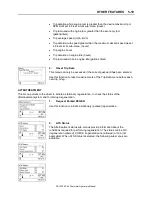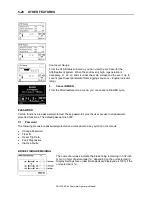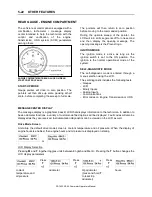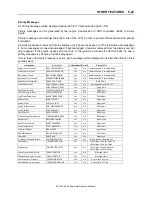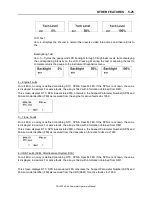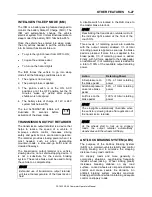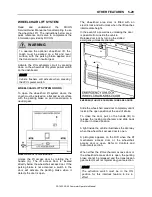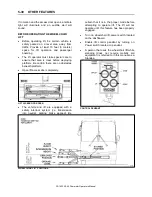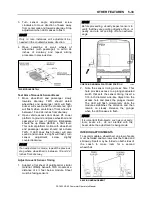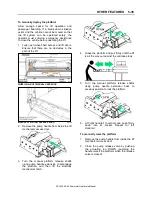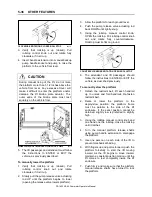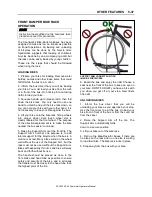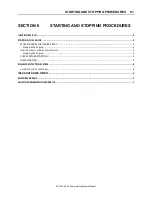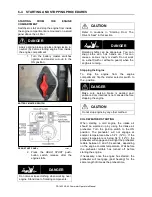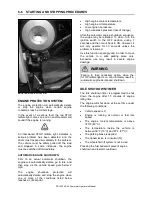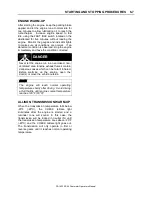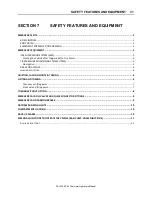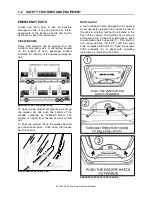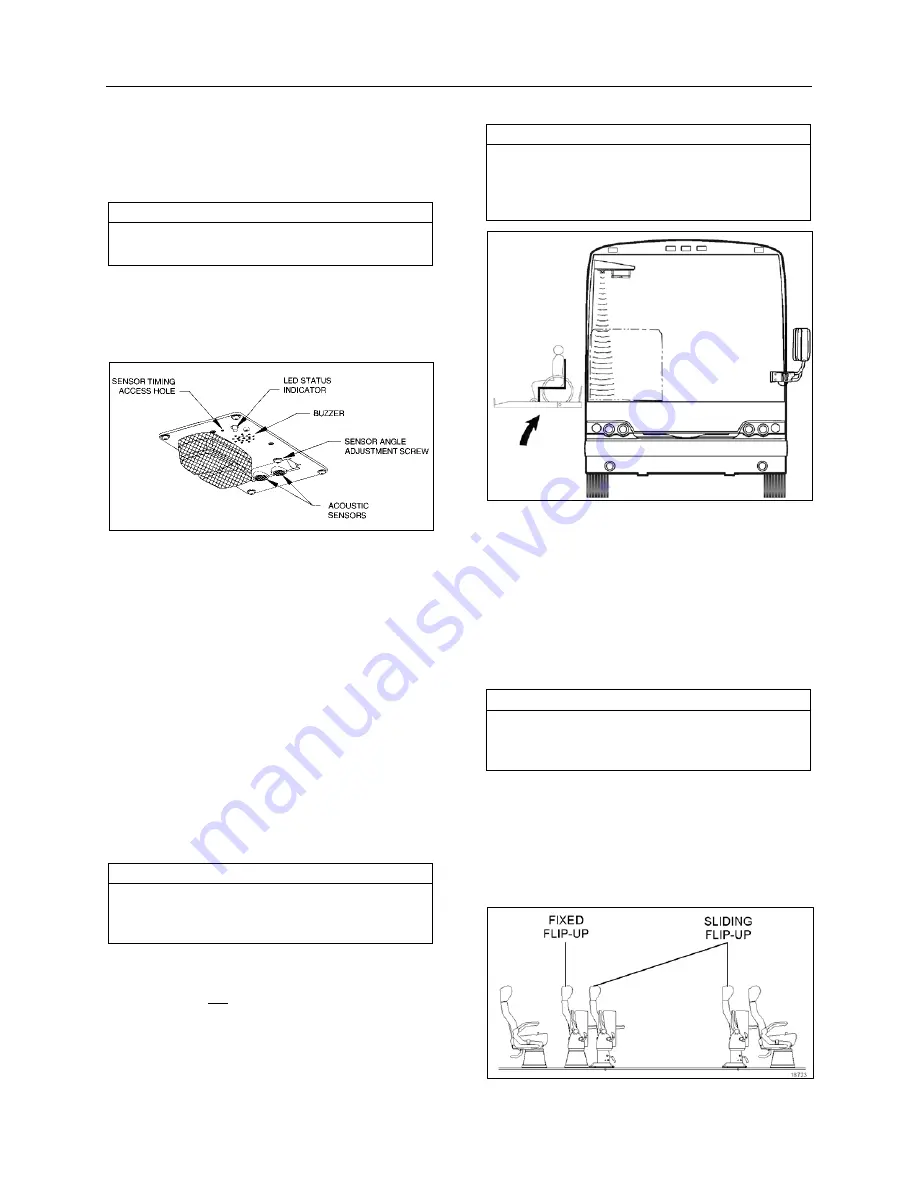
OTHER FEATURES 5-33
PA1633 X3-45 Commuter Operator’s Manual
3. Turn sensor angle adjustment screw
clockwise to move direction of beam away
from center aisle and towards doorway. Stop
adjustment when LED ceases to flash.
NOTE
Only in rare instances will adjustment be
needed in the counterclockwise direction.
4. Move centerline of small wheels of
wheelchair (with passenger) to within 24
inches of doorway and repeat aiming
procedure in previous step.
TWS MODULE DETAIL
23368
Test Aim of Acoustic Sensor Beam
1. Move wheelchair and passenger slowly
towards doorway. TWS should detect
wheelchair and passenger (LED will flash,
buzzer will sound and the module red light
will flash) when centerline of front wheels is
between 18 and 24 inches from doorway.
2. Open vehicle access door above lift. Lower
platform to ground and place wheelchair and
passenger at rear of platform. Bridgeplate
should be up. Raise platform to floor level.
This normal platform motion with wheelchair
and passenger aboard should not actuate
TWS. If LED does flash (buzzer will also
sound and module red light will flash), turn
sensor adjustment screw slightly
counterclockwise.
NOTE
If an adjustment is made, repeat the previous
step where wheelchair is between 18 and 24
inches from doorway.
Adjust Acoustic Sensor Timing
1. Support a flat sheet of cardboard or similar
material, directly beneath TWS module at a
distance of 4½ feet below module. Sheet
must be facing sensors.
NOTE
Before proceeding, visually inspect sensors to
verify that they are pointing directly at floor, or
nearly, and are not pointing off at an extreme
angle.
CHECKING NORMAL PLATFORM POSITION
23372
2. Note the sensor timing access hole. This
hole provides access to a plunger-actuated
switch that sets the sensor timing. Insert a
1/16-inch diameter wire-like object into the
access hole and press the plunger inward.
The LED will flash momentarily while the
module establishes the distance and then
remain on steady. Release the plunger
when the LED ceases to flash.
NOTE
It is important that objects, such as your body,
tools, seats, etc., do not interfere with the
beam while the adjustment is being made.
INTERIOR APPOINTMENTS
To accommodate a wheelchair, one row of seats
must be folded and two rows must be folded and
slid away. Seats may be folded on both sides of
the coach to make room for a second
wheelchair.
SEATING ARRANGEMENT
Summary of Contents for X3-45 COMMUTER 2018
Page 1: ...OPERATOR S MANUAL X3 45 COMMUTER COACH...
Page 2: ......
Page 3: ...COACH MANUFACTURER X3 45 COMMUTER OPERATING MANUAL March 2018...
Page 4: ...PA1633 MARCH 2018 Featuring REVISION DESCRIPTION DATE FIRST RELEASE 03 2018...
Page 8: ......
Page 12: ......
Page 70: ...4 36 CONTROLS AND INSTRUMENTS PA1633 X3 45 Commuter Operator s Manual...
Page 108: ...5 38 OTHER FEATURES PA1633 X3 45 Commuter Operator s Manual...
Page 116: ...6 8 STARTING AND STOPPING PROCEDURES PA1633 X3 45 Commuter Operator s Manual...
Page 120: ...7 4 SAFETY FEATURES AND EQUIPMENT PA1633 X3 45 Commuter Operator s Manual KIDDE IMAGES...
Page 128: ...7 12 SAFETY FEATURES AND EQUIPMENT PA1633 X3 45 Commuter Operator s Manual...
Page 148: ...8 20 CARE AND MAINTENANCE PA1633 X3 45 Commuter Operator s Manual...
Page 150: ...9 2 TECHNICAL INFORMATION PA1633 X3 45 Commuter Operator s Manual OVERALL DIMENSIONS...
Page 158: ...9 10 TECHNICAL INFORMATION PA1633 X3 45 Commuter Operator s Manual...
Page 160: ......
Page 164: ......

